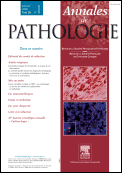
ANNALES DE PATHOLOGIE
Scope & Guideline
Connecting Research and Practice in Forensic Medicine
Introduction
Aims and Scopes
- Molecular and Genetic Pathology:
The journal emphasizes the role of molecular techniques and genetic profiling in diagnosing various cancers and other diseases, reflecting the growing importance of personalized medicine. - Ecological and Environmental Impacts in Pathology:
There is a notable focus on the ecological transformation within pathology, including discussions on the environmental impact of pathology practices and the relevance of sustainable methodologies. - Case Studies and Clinical Insights:
A significant portion of the journal's publications consists of detailed case studies that provide clinical insights into rare diseases, unusual presentations, and the challenges faced in diagnostics. - Educational Initiatives:
The journal promotes educational content, including seminars and workshops aimed at enhancing the knowledge and skills of pathology professionals. - Updates on Classification and Guidelines:
It regularly publishes updates on WHO classifications and consensus guidelines in pathology, which are essential for practitioners to stay informed about current standards.
Trending and Emerging
- Artificial Intelligence in Pathology:
There is a growing interest in the application of artificial intelligence and digital pathology, with discussions on how these technologies can enhance diagnostic accuracy and efficiency. - Focus on Rare and Complex Cases:
An increasing number of publications are dedicated to rare tumors and complex pathological cases, highlighting the need for detailed case analyses and sharing of knowledge among pathologists. - Interdisciplinary Approaches:
Emerging themes reflect a trend towards interdisciplinary research, integrating pathology with fields such as genetics, oncology, and environmental science, showcasing the interconnectedness of these disciplines. - Patient-Centric Care Models:
There is an increasing emphasis on equitable access to care and patient-centric models in pathology, particularly for rare diseases, indicating a shift towards more holistic approaches in medical practice. - Educational Innovations in Pathology:
The journal is placing greater emphasis on educational initiatives, including seminars and workshops aimed at enhancing the training and development of pathology professionals.
Declining or Waning
- Traditional Diagnostic Techniques:
There has been a noticeable decrease in publications focusing solely on traditional histopathological techniques, as the field increasingly adopts molecular and digital methodologies. - Non-Malignant Pathologies:
Research and case studies related to non-malignant conditions appear to be declining, possibly overshadowed by the more urgent focus on cancer and malignancies. - General Pathology Reviews:
The journal has shifted away from broad reviews of general pathology topics, favoring more specialized and detailed explorations of specific diseases and emerging trends.
Similar Journals
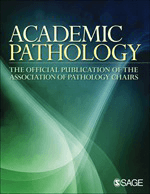
Academic Pathology
Advancing the Frontiers of Pathology and Forensic MedicineAcademic Pathology, published by Elsevier Science Inc, is a prominent open-access journal dedicated to advancing the field of Pathology and Forensic Medicine. Since its inception in 2014, the journal has aimed to provide a platform for high-quality research, fostering collaboration and innovation within the scientific community. With an impact factor that places it in the Q3 category for 2023, it represents a solid resource for researchers, professionals, and students seeking to stay at the forefront of evolving methodologies and practices in pathology. The journal is indexed in Scopus, ranking #117 out of 208 in its category, reflecting its commitment to disseminating valuable findings that enhance clinical and forensic applications. As an accessible source of knowledge, Academic Pathology empowers its readers to refine their studies and contribute novel insights to the ever-growing body of scholarly work in pathology.

Malaysian Journal of Pathology
Advancing knowledge in pathology and medicine.Malaysian Journal of Pathology, published by the MALAYSIAN JOURNAL PATHOLOGY, stands as a pivotal resource in the fields of pathology and medicine, contributing rich insights since its inception in 1979. This peer-reviewed journal, based in Malaysia, is dedicated to disseminating original research, review articles, and case studies that advance the understanding of disease mechanisms and diagnostics. With a current impact factor reflecting its ranked positioning—Q4 in Cell Biology, Q4 in Histology, and Q3 in both Miscellaneous Medicine and Pathology & Forensic Medicine—this journal serves as an essential platform for researchers, clinicians, and students alike. Although it operates without open access, its scholarly rigor and contributions are well recognized, holding ranks such as #84 in Pathology and Forensic Medicine according to Scopus. The Malaysian Journal of Pathology is committed to fostering innovation and excellence in medical research, making it an invaluable tool for professionals seeking to stay abreast of significant advancements in the pathology domain.
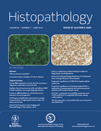
HISTOPATHOLOGY
Exploring Innovations in Histology and PathologyHISTOPATHOLOGY is a premier scholarly journal published by WILEY, targeting the fields of histology, pathology, and forensic medicine. With an ISSN of 0309-0167 and an E-ISSN of 1365-2559, this esteemed journal has maintained a strong academic presence since its inception in 1977. Boasting an impressive Q1 ranking in crucial categories such as Histology and Pathology, it ranks 13th out of 208 in Pathology and Forensic Medicine, and 5th out of 62 in Histology, reflecting its high impact and relevance within the scientific community. HISTOPATHOLOGY serves as a critical platform for disseminating significant research findings, reviews, and advancements in the diagnostic and therapeutic aspects of pathology. Although it does not operate under an open access model, its rigorous peer-review process ensures that published articles uphold the highest standards of scientific integrity. Scholars and practitioners alike benefit from the insights shared in this journal, as it aims to bridge the gap between laboratory science and clinical practice, fostering innovation and enhancing our understanding of disease mechanisms.
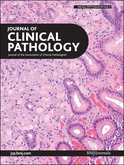
JOURNAL OF CLINICAL PATHOLOGY
Pioneering Research in Clinical PathologyJOURNAL OF CLINICAL PATHOLOGY, published by BMJ PUBLISHING GROUP, stands at the forefront of advancements in the field of clinical pathology, offering a platform for groundbreaking research and insights from 1948 to the present. With an impressive impact factor and categorized as Q1 in both Medicine (miscellaneous) and Pathology and Forensic Medicine for 2023, the journal holds a distinguished position in the academic community, ranking 22nd out of 208 journals in its category on Scopus and representing the 89th percentile. While the journal does not currently offer open access, it remains a vital resource for researchers, healthcare professionals, and students seeking to stay current with innovative methodologies, clinical techniques, and diagnostic advancements. Located in London, United Kingdom, the journal aims to bridge the gap between laboratory findings and clinical practice, emphasizing the importance of evidence-based pathology in improving patient care and treatment outcomes. Engage with the JOURNAL OF CLINICAL PATHOLOGY to enhance your understanding and contribute to the evolving landscape of clinical pathology research.
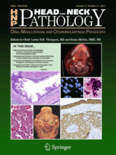
Head & Neck Pathology
Fostering Excellence in Head & Neck ResearchHead & Neck Pathology is a leading journal dedicated to advancing the study of pathologies affecting the head and neck region, published by Springer. With an ISSN of 1936-055X and E-ISSN of 1936-0568, this journal serves as a vital resource for the dissemination of research in oncology, otorhinolaryngology, and pathology, achieving impressive rankings of Q2 in Oncology and Q1 in both Otorhinolaryngology and Pathology & Forensic Medicine in 2023. Since its inception in 2007, Head & Neck Pathology has continued to provide a platform for innovative research findings, case studies, and reviews, fostering a deeper understanding of head and neck diseases. The journal's commitment to excellence is reflected in its rigorous peer-review process and accessibility through various academic platforms. Researchers, clinicians, and students will find valuable insights and knowledge that can enhance clinical practice and improve patient outcomes in the dynamic field of head and neck pathology.

Turkish Journal of Pathology
Advancing the Frontiers of Pathology ResearchTurkish Journal of Pathology, published by the Federation Turkish Pathology Society, stands as a vital platform for disseminating high-quality research in the field of pathology and forensic medicine. With an ISSN of 1018-5615 and an E-ISSN of 1309-5730, this journal has been an open-access publication since 2013, ensuring that cutting-edge findings are readily available to the global community. Based in Turkey, it aims to contribute significantly to the advancement of pathology as it converges from 2010 to 2024, currently holding a Q3 quartile ranking in its category according to 2023 metrics. As it ranks #129 out of 208 in the Scopus database for Medicine, Pathology, and Forensic Medicine, it offers researchers, professionals, and students invaluable insights and innovative studies that address critical developments in the field. The Turkish Journal of Pathology fosters collaboration and knowledge-sharing, making it an essential resource for anyone involved in pathology research and practice.
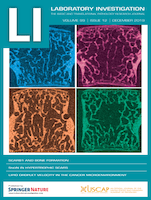
LABORATORY INVESTIGATION
Enriching Knowledge in Pathology and Forensic MedicineLaboratory Investigation is a premier academic journal published by Elsevier Science Inc, specializing in the fields of Pathology, Forensic Medicine, Cell Biology, and Molecular Biology. With its ISSN 0023-6837 and E-ISSN 1530-0307, this journal has been a significant contributor to scientific discourse since its inception in 1952, converging into its current form by 2024. It holds an impressive standing in its respective fields, featuring a 2023 Journal Rank of Q2 in both Cell Biology and Molecular Biology, and an elite Q1 ranking in Pathology and Forensic Medicine, reflecting its influence and quality of research, as seen in its Scopus ranks—17th out of 208 in Pathology and Forensic Medicine. Although it does not offer Open Access options, the journal remains a vital resource for researchers, professionals, and students who seek to disseminate and engage with high-caliber research findings. The importance of Laboratory Investigation is underscored by its commitment to advancing the understanding of laboratory and translational medicine, paving the way for innovations that enhance clinical practices.

Oral & Maxillofacial Pathology Journal
Bridging Research and Practice in Maxillofacial PathologyOral & Maxillofacial Pathology Journal is a prominent peer-reviewed publication dedicated to advancing the field of oral and maxillofacial pathology. Published by the KAIRALI SOCIETY OF ORAL & MAXILLOFACIAL PATHOLOGISTS, this journal aims to provide a platform for sharing innovative research, clinical practices, and new techniques related to the diagnosis and management of oral diseases. With a commitment to open access, it ensures that valuable knowledge reaches a global audience of researchers, dental professionals, and students alike. Although specific impact metrics such as the HIndex and Scopus ranking are not listed, the journal is regarded as an essential resource for those involved in the oral health community. It plays a crucial role in fostering collaboration and disseminating cutting-edge advancements that can enhance patient care and clinical outcomes in oral pathology. For professionals looking to stay ahead in this dynamic field, Oral & Maxillofacial Pathology Journal serves as an indispensable tool for both foundational learning and advanced research.
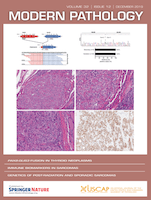
MODERN PATHOLOGY
Exploring the Depths of Forensic MedicineMODERN PATHOLOGY is a premier journal in the field of pathology and forensic medicine, published by Elsevier Science Inc. With an impressive impact factor that places it in the top 1st quartile (Q1) for 2023, and a remarkable rank of 5 out of 208 in its category according to Scopus, it serves as a vital resource for researchers, professionals, and students alike. Established in 1988, the journal focuses on the latest advancements in diagnostic pathology, molecular pathology, and related fields, providing a platform for innovative research that drives the discipline forward. Although it does not operate under an open access model, readers can expect rigorously peer-reviewed publications that contribute to the growing body of knowledge in pathology. With a continuous commitment to excellence and relevance, MODERN PATHOLOGY remains a fundamental avenue for disseminating high-quality scientific research globally, facilitating the growth and development of its field.
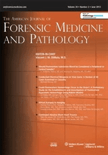
AMERICAN JOURNAL OF FORENSIC MEDICINE AND PATHOLOGY
Pioneering Research in Pathology and ForensicsThe American Journal of Forensic Medicine and Pathology is a pivotal publication within the field of forensic science and pathology, dedicated to disseminating influential research and advancements in the evaluation of death and injury in legal contexts. Published by Lippincott Williams & Wilkins, this journal, which has been in circulation since 1980, serves as a vital resource for professionals, researchers, and students focused on intersecting disciplines such as medicine and forensic investigations. While it holds a respectable Q3 ranking in both the Medicine (Miscellaneous) and Pathology and Forensic Medicine categories as of 2023, the journal's impact is underscored by its contributions to the ongoing dialogue on forensic practices and methodologies. The American Journal of Forensic Medicine and Pathology provides a platform for innovative papers that shape the future of forensic science, also offering insights through case studies, reviews, and research articles that cater to its diverse readership. With an ISSN of 0195-7910 and E-ISSN 1533-404X, the journal continues to support the scholarly community in advancing knowledge within this critical field.